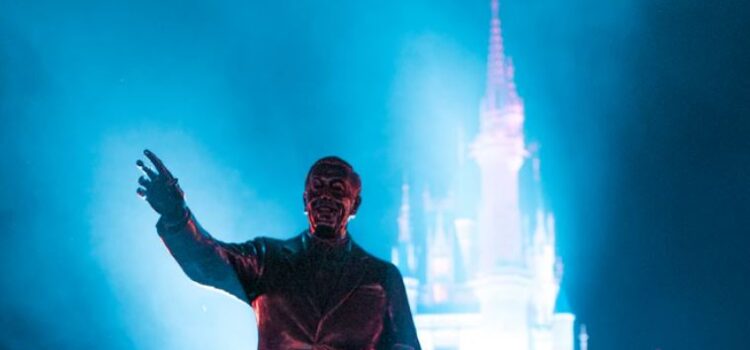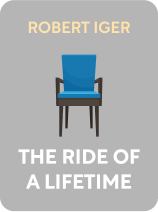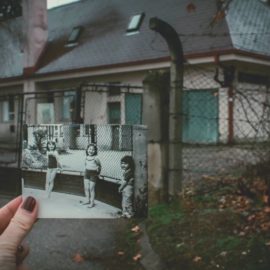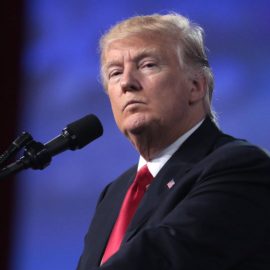

This article is an excerpt from the Shortform book guide to "The Ride of a Lifetime" by Bob Iger. Shortform has the world's best summaries and analyses of books you should be reading.
Like this article? Sign up for a free trial here .
What was former Disney CEO Michael Eisner like? How did Eisner revitalize Disney and then almost cause its downfall?
Former Disney CEO Michael Eisner revitalized Disney, partially by putting its abundant assets to work and partially by expanding their footprint. However, his micromanagement and pessimism led to tensions with board members and ruined potential business deals.
Continue on to read about former Disney CEO Michael Eisner’s rise and fall within Disney.
Disney CEO Michael Eisner‘s Rise and Stumbles
Former Disney CEO Michael Eisner had a remarkable rise and fall within Disney. When he joined in 1984, Disney was nowhere near the entertainment juggernaut it is today. The founder Walt Disney had died in 1966, and since then the company had entered a creative and financial malaise.
In response, board members Roy Disney (Walt’s nephew) and Sid Bass (Disney’s largest shareholder) hired Disney CEO Michael Eisner to reverse the decline. Eisner revitalized Disney, partially by putting its abundant assets to work and partially by expanding their footprint:
- Taking advantage of VCR technology, he started selling classic Disney movies on videocassette.
- He raised ticket prices at Disney parks, gaining more revenue without impacting attendance.
- He hired Jeffrey Katzenberg and resuscitated Disney Animation, which produced hit movies like Beauty and the Beast and The Lion King. This in turn fueled attendance at their theme parks and sold consumer products.
- He expanded hotels at theme parks and expanded parks internationally, opening Disneyland Paris and starting work on Hong Kong Disneyland.
- He led the acquisition of ABC/Capital Cities in 1995, which brought in millions of subscribers in ESPN.
From 1984 to 1994, Disney’s profits quadrupled, and its stock price grew by 13-fold thanks to the leadership of Disney CEO Michael Eisner.
However, by 2000, when Bob Iger officially became Disney CEO Michael Eisner’s number two, Disney had begun another decline:
- Disney Animation hadn’t produced a major company-defining hit in years.
- Pixar, Disney’s partner, was producing major hits like Toy Story and A Bug’s Life, but they were now publicly fighting about the terms of their deal. Pixar had signed an unfavorable deal in the 1990s when they were still a young company, but now they were tired of being treated as a mere hired hand. Now with more leverage, Pixar and its CEO Steve Jobs were arguing for a greater share of profits and more ownership rights, reducing Disney to a mere distributor; Disney and Eisner fought back, but they knew Pixar had the better position now.
- Digital technology and the Internet were changing media. Notably, copyrighted content could be distributed for free—Apple ran a “Rip. Mix. Burn.” campaign, arguing that once you bought music, you could do whatever you wanted with it. Eisner opposed this publicly, which further annoyed Steve Jobs.
- In 2001, the September 11th attacks occurred, which halted tourism globally and caused Disney stock prices to plummet.
This cocktail of problems marked the beginning of Eisner’s downfall.
Eisner’s Management Style
In this precarious environment, Bob Iger began training closely under Disney CEO Michael Eisner. Iger notes two management characteristics of Eisner’s, both with mixed impressions.
An Eye for Detail, Tending to Micromanagement
Eisner was a notorious perfectionist. When walking through parks, he kept the guests’ experience constantly in mind and noticed minute details to improve it. Iger walked for miles inside their parks with Eisner, and he was impressed with Eisner’s ability to pick out inconsistent building styles and insufficient landscaping. While visiting Disney Imagineering, the creative studio of Disney experiences, Eisner would also critique storyboards and hotel lobby designs.
Like Iger’s old boss Roone Arledge, Eisner saw details that others were blind to, and he demanded greatness. He obviously cared about their customers’ experience, and he had a remarkable ability to see the big picture and the tiny details all at once.
However, Eisner’s eye for detail could cross over into an oppressive micromanagement and pettiness. In a TV interview in a Disney hotel, he pointed out the lamps and boasted that he’d picked them out himself—an egotistical claim for a CEO.
Pessimism
In the midst of Disney’s troubles, Eisner was pessimistic, and he voiced his doom-and-gloom predictions to Iger. He’d predict that Disney would be outclassed by a competitor, that a deal would fall through, or a project would fail. While this anxiety fueled his motivation to claw his way out, it ruined morale for people reporting to him.
Eisner’s Downfall
In the wake of these challenges, two board members, Roy Disney and his lawyer Stanley Gold, challenged Eisner to reverse course or threatened to fire him. As Walt Disney’s nephew, Roy Disney felt a conservatism to protect the company’s legacy and purity (he opposed the Capital Cities/ABC deal, since it would bring in non-Disney brands). To add, Roy Disney had a long-running grievance of not being given enough respect within Disney, including from his uncle Walt; he bristled at being treated insultingly.
Over the next few years, the friction between Eisner and the board escalated over a series of events:
- In 2002, Roy and Stanley sent a letter to Disney’s board with a list of grievances, including ABC’s falling ratings, the Pixar dispute, theme park strategy, Eisner’s stifling micromanagement, and his refusal to create a succession plan.
- In 2003, Eisner took advantage of a board stipulation that board members had to retire at 72 years old (Roy Disney had turned 73). This had never been invoked before. Eisner didn’t tell Disney himself, instead relying on the board’s committee to share the news.
- In response, Roy and Stanley announced their resignation from the board, but sent a scathing three-page letter to Eisner, pointing out specific failures and calling for Eisner’s resignation.
- Roy and Stanley began a public “Save Disney” campaign, encouraging shareholders to withhold their vote of support for Eisner as a board member. They argued Disney was being run into the ground and losing the respectable values that made it special.
- The relationship with Pixar and Jobs soured publicly. Eisner wrote a memo to the board believing that Finding Nemo would fail, and this would give Disney more leverage. This memo leaked, and Jobs was infuriated (he never liked when others exerted their leverage over him). Jobs declared Pixar would never work with Disney again. Roy and Stanley pointed to this as yet another Eisner failure.
- In this turmoil, sharks circled in the waters. Comcast made an unsolicited bid to acquire Disney for $64 billion in Comcast stock (note: At the time, this represented a premium of $5 billion over Disney’s market capitalization.) This would have created the world’s largest media company. Ultimately this failed—Disney’s board rejected the offer and Comcast’s shareholders were not supportive, sinking Comcast’s stock and disrupting the deal terms. But it was a sign of fragility in Disney.
- Institutional Shareholder Services, the biggest advisor of proxy votes, said they would back Roy and Stanley’s campaign to withhold support of Eisner.
All this came to a head at the annual shareholder meeting in March 2004. Roy and Stanley gave statements excoriating Eisner and received a standing ovation; Eisner and Iger then answered an aggressive Q&A. In the end, the proxy votes were tallied, and an unprecedented 43% of shareholders withheld support for Eisner’s re-election to the board.
This was a crushing blow, and the board removed Eisner from his chairman role (he stayed on the board). Board member and former Senate majority leader George Mitchell became chairman instead.
In September 2004, Eisner announced to the board that he would step down in 2006 when his contract expired. The board accepted the offer, and pushed the timeline a year faster—they immediately announced a search for Eisner’s successor, targeting June 2005 as a deadline, and they wanted to replace Eisner soon after.

———End of Preview———
Like what you just read? Read the rest of the world's best book summary and analysis of Bob Iger's "The Ride of a Lifetime" at Shortform .
Here's what you'll find in our full The Ride of a Lifetime summary :
- How Bob Iger went from television crew member to CEO of Disney
- The 10 major principles behind Iger's management style and success
- How Iger resuscitated Disney Animation by buying Pixar






